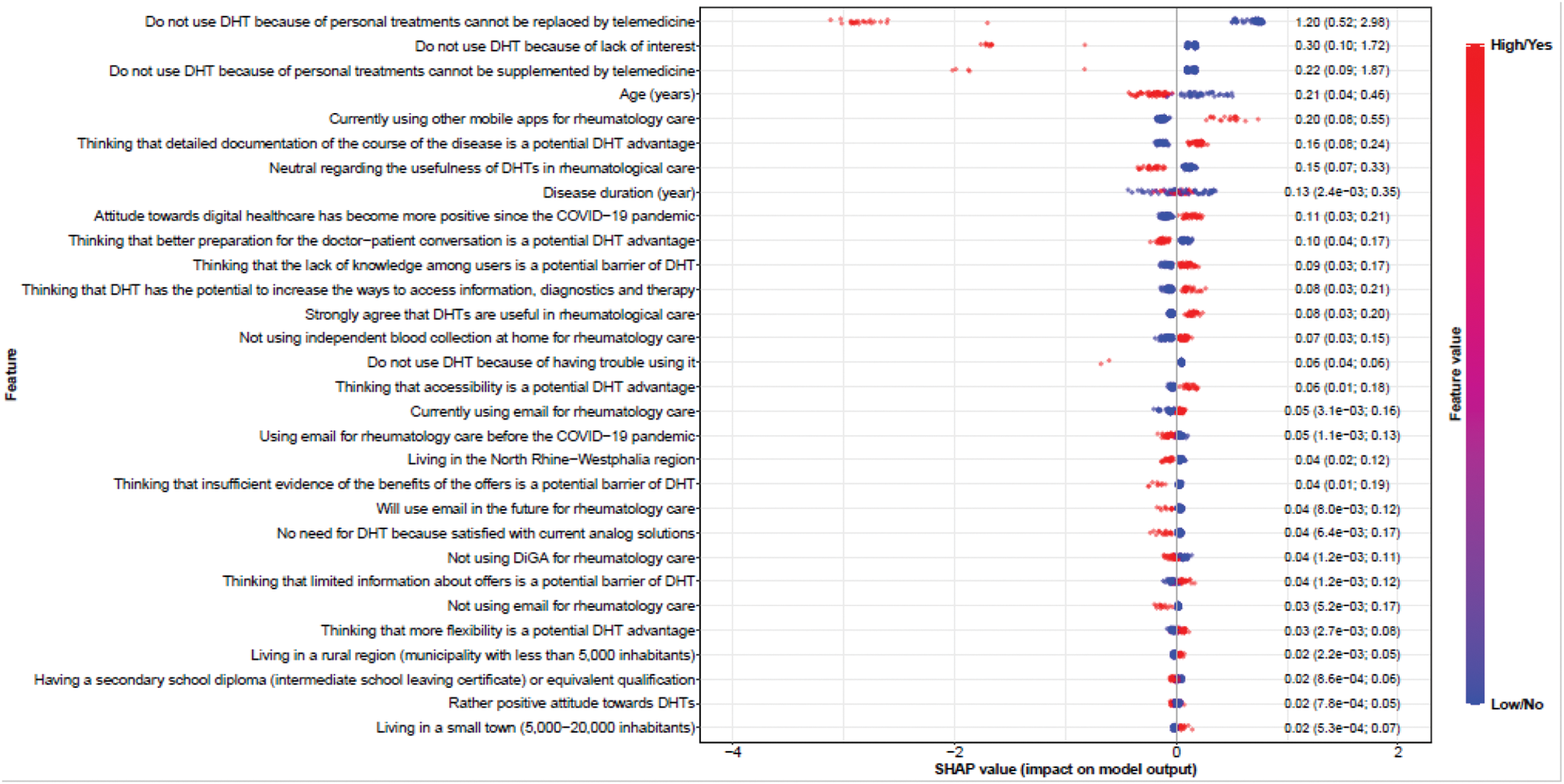

Background: The adoption of digital health technologies (DHTs) is pivotal for enhancing healthcare delivery and accessibility, particularly for patients with chronic conditions such as rheumatic diseases. Identifying predictors of DHT is of utmost importance to guide the design of patient-centered digital health services and to inform strategies to bridge the digital divide.
Objectives: To leverage machine learning to identify key predictors of DHT use among patients in rheumatology care.
Methods: The extreme gradient boosting (XGBoost) algorithm was applied to predict DHT use and identify its determinants by reusing a German nationwide survey data and analyzing 146 sociodemographic, technical, and medical factors. Data were split into training and test sets (70%/30%) using downsampling, and a ten-fold nested cross-validation with hyperparameter tuning was performed to prevent overfitting. Model performance was assessed using the area under the receiver operating characteristic curve (AUROC), accuracy, sensitivity, and specificity. Furthermore, Shapley additive explanations (SHAP), an explainable artificial intelligence approach, was used to determine predictor importance. When a predictor directed the model toward DHT use, it was considered a promoting factor; when it directed the model toward not using DHT, it was considered an impeding factor.
Results: The analysis included 337 patients (mean age: 52.5 years; 65% female), with 55% reporting DHT use. The final XGBoost model, which included 30 features, achieved an AUROC of 0.96 (95% CI: 0.91–1.00), an accuracy of 0.92 (95% CI: 0.85–0.97), a sensitivity of 98%, and a specificity of 85%. On the one hand, key promoting predictors of DHT use included current use of mobile apps for rheumatology care, the perceived advantage of detailed disease documentation, and a positive shift in attitudes toward digital healthcare post-COVID-19 (Figure 1). On the other hand, key impeding predictors of DHT use included belief that personal treatments cannot be replaced or supplemented by telemedicine, lack of interest in DHTs, and advanced age.
Conclusion: The XGBoost model effectively predicted DHT use and identified several modifiable predictors. Addressing barriers such as misconceptions about telemedicine and enhancing digital literacy could promote equitable DHT adoption. These findings can inform targeted interventions to optimize digital health integration into rheumatology care.
REFERENCES: NIL.
Feature importance according to kernel SHAP values for the prediction of DHT use among patients in rheumatology care

Acknowledgements: FM & PP contributed equally and share the first authorship.
Disclosure of Interests: Felix Muehlensiepen AbbVie, Novartis, AbbVie, Novartis, Pascal Petit: None declared, Susann May AbbVie, Novartis, Nicolas Vuillerme: None declared.
© The Authors 2025. This abstract is an open access article published in Annals of Rheumatic Diseases under the CC BY-NC-ND license (